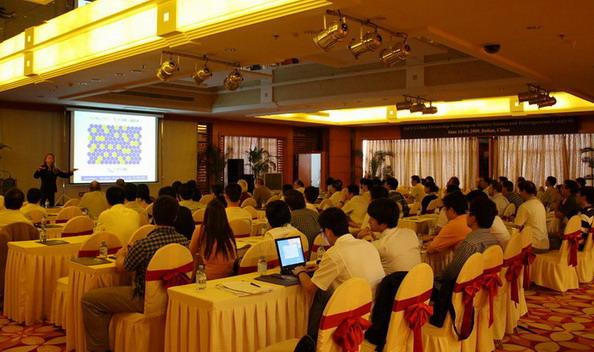
The conference was sponsored by DICP and was held from 14th to 19th of July at the Xinghai Holiday Inn Hotel. This conference is part of the program of the "Partnership for International Research and Education for Electron Chemistry and Catalysis at Interfaces"(PIRE-ECCI), which is supported financially by the National Science Foundation(NSF) of the United States, the National Science Foundation Committee(NSFC) of China and the State Ministry of Science & Technology(MST) of China from the years of 2006 to 2010.
The chairman of this year's conference was Prof. Alec M. Wodtke of UC Santa Barbara of the United States. Besides prominent scientists in the areas of heterogeneous catalysis and surface science were invited to deliver lectures on the conference, graduate students of the relevant areas from the UC Santa Barbara and DICP were also invited to present their research work. This created opportunities for the graduate students not only to conduct exchanges between both sides, but also to carry out dialogues with top-class scientists of the world for making a figure.
After the conference, the participating graduate students of both sides will visit well-known academic institutions and enterprises in the Chinese cities of Suzhou, Shanghai, Wuxi and Hangzhou. These activities will help the graduate students to fully understand the rapid advances made in the chemistry and chemical engineering fields of China, and to render themselves with broader visions.
The PIRE is the first program in PIRE-ECCI between China and USA. The American partner organization is UC Santa Barbara, while the Chinese partners include DICP, Science & Technology University of China, and CAS Institute of Chemistry. The main objective of the PIRE is to integrate research of frontier sciences with the education of graduate students, so as to promote international interdisciplinary exchanges for graduate students of both countries.
Since the starting of the program, collaborations in the areas of nano-catalysis, photocatalysis, surface chemical kinetics, and computational theoretical chemistry have been established effectively. Several tens of graduate students have been sent to partner institutions of both countries to carry out research work.
Symposia on catalysis and on surface chemistry have been organized alternatively by partner organizations of both countries.
Related News
Photos
More>>trade
- British Consulate-General Guangzhou, Science and Innovation Deputy Director
- Beijing, China, to host the 12th ISRM Congress in 2011
- 3rd Annual Symposium of the Glycobio Chitosan Oligosaccharide Research Center
- Prof. Xia-ting Feng elected as ISRM President for 2011-2015
- Shaanxi Provincial People's Government grants "Sanqin Friendship Award" to the





